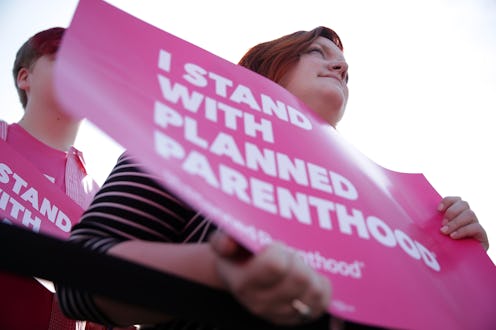News
Teen Pregnancies Increased In Texas After It Defunded Planned Parenthood

A new study conducted by Analisa Packham, a Texas A&M alumnus, has determined that, following the state's efforts to defund Planned Parenthood, the rate of teen births in Texas rose by 3.4 percent. Since 2011, Texas cut funding for family planning services by roughly 67 percent — from $111 million to $37.9 million over the course of two years — resulting in the closures of 80 clinics, with Planned Parenthood taking the biggest blows.
Packham estimates that 2,200 teens births would have been prevented had access to family planning services and reproductive health care not been stripped so heavily. The measures targeting these services were heavily pushed by pro-life Texas legislators, particularly Gov. Rick Perry.
"I was really proud to be able to sign legislation that we worked with our legislature to defund Planned Parenthood in the state of Texas," Perry said in 2012. "There are 12 abortion clinics that aren’t open in the state of Texas today because our members of the Legislature had the courage, the wisdom to do that."
Perry has a record of pushing a conservative agenda when it comes to reproductive rights and sex education. In 2009, the Texas Freedom Network estimated that 96 percent of the state's school districts taught students abstinence and no other method of family planning. Despite Texas having the second highest teen pregnancy rate in the country and districts in which methods other than abstinence are taught exhibiting lower rates, Perry continued to be a supporter of abstinence-only education programs. “Abstinence works... it is the best form to teach our children,” he said during a 2011 interview with The Tribune reporter, Evan Smith.
Packham's study directly criticizes Perry's past comments suggesting that slashing funds from family planning clinics and organizations would lead to a decrease in pregnancies and abortions.
Although the primary stated objective of the funding cuts was to decrease abortion incidence, I find little evidence that reducing family planning funding achieved this goal… The results indicate that the funding cuts increased abortion rates by 4.9 percent 1-2 years after the funding cuts and 3.1 percent over three years.
"Reducing funding for family planning services can have the unintended consequences of increasing abortion and reducing the number of women seeking preventative health care," Packham later told Chron.com. "Moreover, the funding for family planning services is cost effective. Cutting such programs is cutting an investment in women and children, which can lead to lower economic productivity, lower tax revenue and higher public expenditures down the line."
Other studies, such as one by the Guttmacher Institute published in 2015, have warned of similar outcomes transpiring if Planned Parenthood continues to be targeted, and in fact, it referred to the situation in Texas as a "cautionary tale."